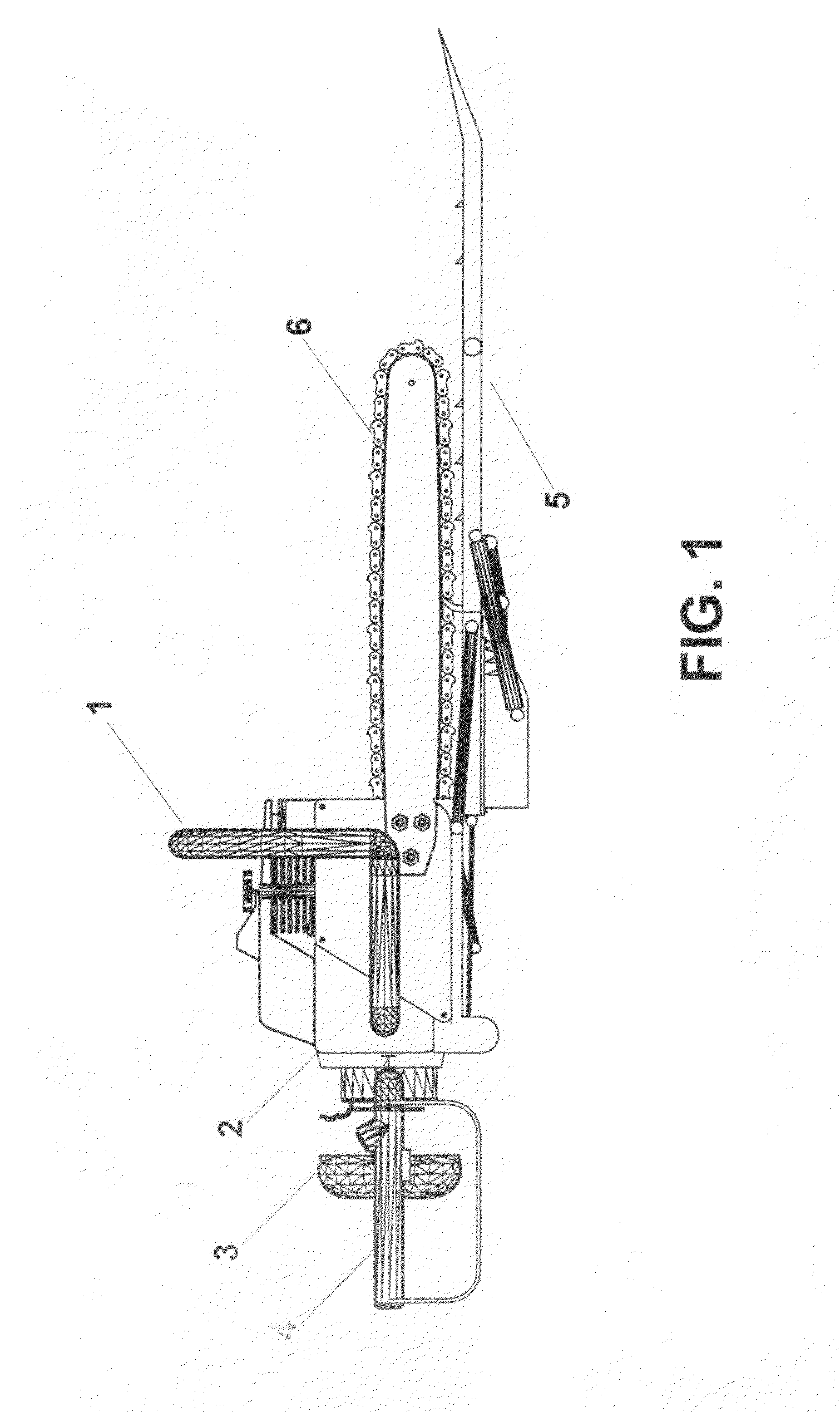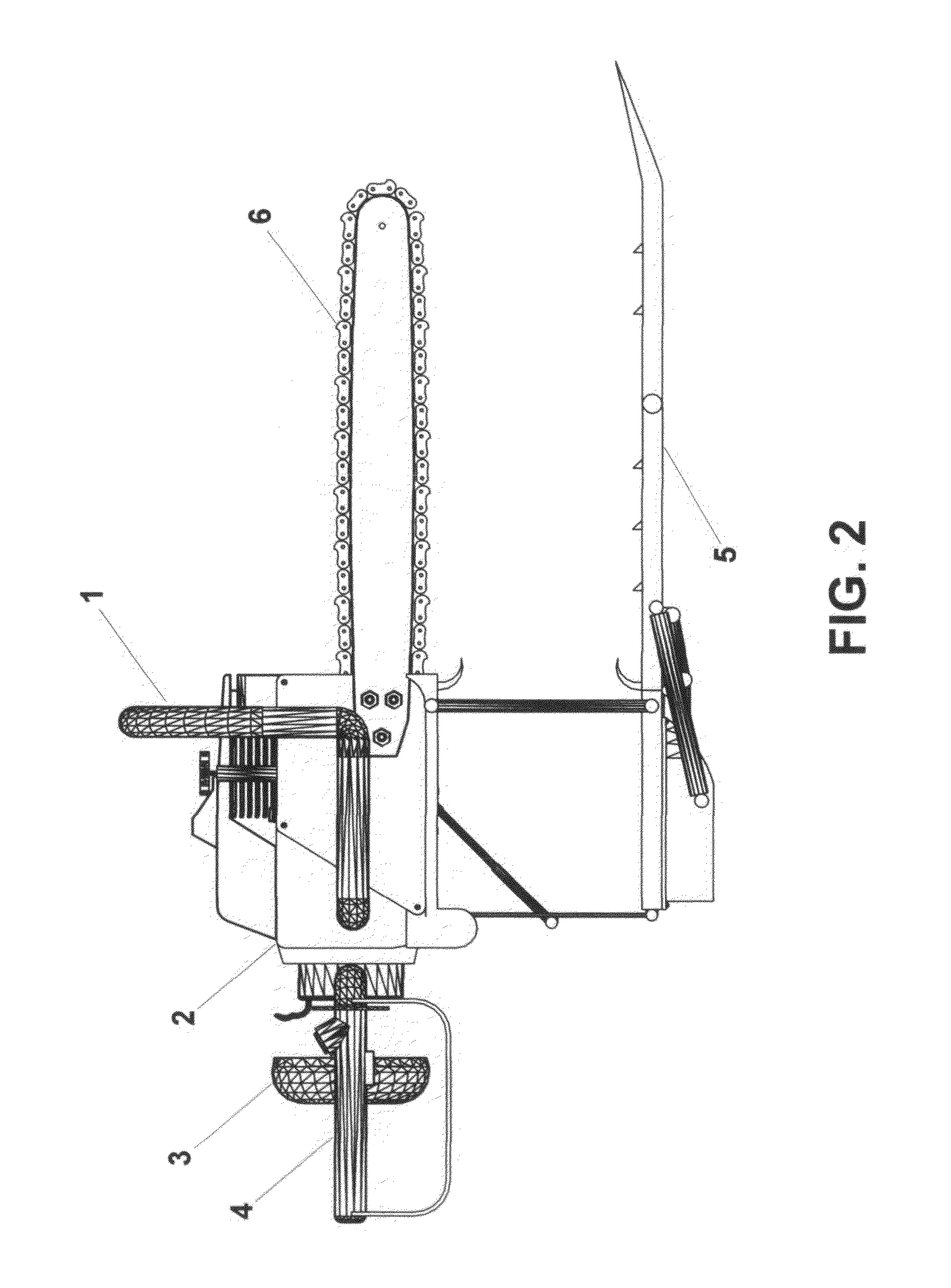Ktc injury prevention chain saw
a chainsaw and chain technology, applied in the field of chainsaw operations, can solve the problems of chainsaw users not being able to control the saw, continuous injuries resulting from the operation, and the inability to control the saw by chainsaw users, so as to prevent any cut through injuries, the effect of adjusting the chain is simple and easy, and the operator is easy to slide the bar
- Summary
- Abstract
- Description
- Claims
- Application Information
AI Technical Summary
Benefits of technology
Problems solved by technology
Method used
Image
Examples
Embodiment Construction
[0060]FIG. 1 is a right view of the chainsaw with stage one, two and three of the anti-kickback / 'cut through device 5 in the closed position. The torso pad 3 is visible at the rear of the saw. The bar handle 1 has been redesigned so that it goes around the sides and top of the saw body 2 symmetrically in order to allow the operator to maintain grip at the same distance from the rear handle 4 when operating the saw with the incremental rotational control 16 set at an angle. This represents a significant part of an overall system that begins with repositioning and redesigning both handles in order to better maintain control of the saw, and help combat the fatigue and muscle strain that arises during continuous use of the chainsaw.
[0061]The rear handle 4 is repositioned and is attached to the right rear side of the saw, and the throttle control 21 is located on the rear handle 4. Also mounted on the top of the rear handle 4 is the pushbutton spike control 20 for releasing the rear faci...
PUM
| Property | Measurement | Unit |
|---|---|---|
| Angle | aaaaa | aaaaa |
| Angle | aaaaa | aaaaa |
| Angle | aaaaa | aaaaa |
Abstract
Description
Claims
Application Information
 Login to View More
Login to View More - R&D
- Intellectual Property
- Life Sciences
- Materials
- Tech Scout
- Unparalleled Data Quality
- Higher Quality Content
- 60% Fewer Hallucinations
Browse by: Latest US Patents, China's latest patents, Technical Efficacy Thesaurus, Application Domain, Technology Topic, Popular Technical Reports.
© 2025 PatSnap. All rights reserved.Legal|Privacy policy|Modern Slavery Act Transparency Statement|Sitemap|About US| Contact US: help@patsnap.com



